Today, there are the following modern contraception options:
- physiological;
- barrier (mechanical);
- spermicidal (chemical);
- hormonal;
- intrauterine;
- emergency contraception.
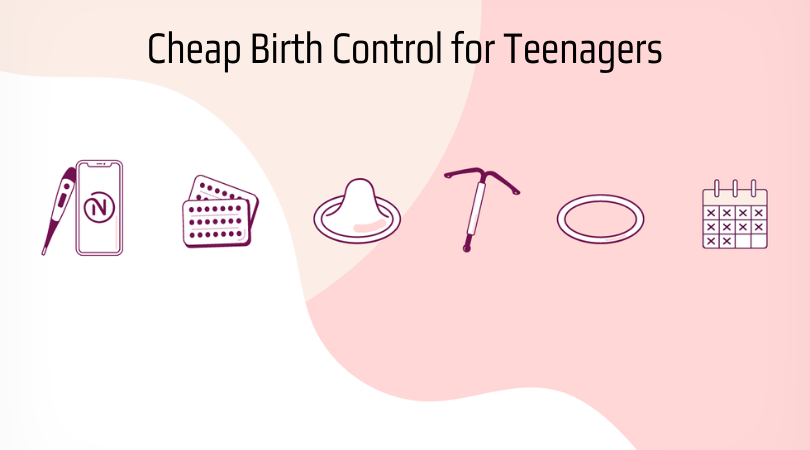
Pediatric gynecologists recommend teenagers to use the following contraception options:
- barrier (mechanical);
- spermicidal (chemical);
- hormonal;
- emergency contraception.
The degree of each contraceptive effectiveness is assessed by the Pearl index. This Index is equal to the number of pregnancies occurring in a group of 100 women who have used a particular birth control option for 12 months.
This birth control for teens that may contain estrogen and progestin is from a cheap price segment but not less effective. Let’s start with each teenagers’ birth control options except for barrier ones.
Spermicidal birth control options for teens (vaginal gel, vaginal suppository)
Spermicidal birth control options for teens are based on the substances that have a detrimental effect on sperm cells – destroying their cell membranes. For this birth control, correct use is very important: spermicides should be injected deep into the vagina, no later than 1 hour before sexual intercourse. Vaginal gel and suppository should be in contact with the cervix.
The active ingredient in most spermicides is nonoxynol-9, which, in addition to the destructive effect on sperm, has a bactericidal and virucidal effect. Another active ingredient, benzalkonium chloride, is 4 times more effective than nonoxynol-9. Pearl Index is equal to 0.68.
With the combined use of spermicides and barrier methods, the contraceptive effect increases. For example, spermicides together with a condom or diaphragm reduce the risk of pregnancy, provide some protection against many sexually transmitted diseases, and reduce the risk of developing inflammatory diseases several times, which is especially important for adolescents.
Hormonal contraceptives such as pills, injections, transdermal patch
The mechanism of action of hormonal birth control for teens is based on:
- suppression of the gonadotropic hormones secretion and ovulatory function of the ovaries;
- an increase in the viscosity of cervical mucus, which prevents the penetration of sperm into the uterine cavity;
- prevention of egg implantation due to changes in the endometrium.
Hormonal contraceptives, depending on the hormonal composition, are divided into the following types:
- combined oral contraceptives containing estrogen and progestin(COCs);
- progestogen-containing contraceptives (mini-pills).
Combined oral contraceptives contain two components – estrogen in the form of ethinyl estradiol (EE) and one of the progestogens. Depending on the amount of estrogen, there are:
- high-dose COCs – contain over 35 mg of ethynyl estradiol (Aranelle, Trivora-28);
- low-dose COCs – contain 30 mg of ethynyl estradiol (Genora 1/35, Lo-Ovral (21/28));
- microdose COCs – 20 mg of ethynyl estradiol (Alesse 21/28, Levlite).
Depending on the route of administration, hormonal birth control are divided into:
- oral (pills);
- injection (Depo-Provera);
- implants (Implanon, Nexplanon);
- transdermal patch (Twirla, Xulane);
- vaginal (NuvaRing).
Hormonal pills are divided into monophasic, biphasic, and triphasic. Each pill of monophasic COCs contains a constant dosage of estrogenic and gestagen components. The content of estrogenic and gestagen components in the biphasic and triphasic pill is different depending on the phase of the menstrual cycle.
According to the WHO, it is monophasic drugs that are primarily recommended as oral birth control for teenagers, since they have a number of advantages:
- the most effective among non-invasive contraceptives;
- easy reversibility;
- high safety of the birth control for teenagers and the possibility of long-term use.
Modern COCs are highly effective, safe, contribute to the regulation of the menstrual cycle of a young girl, eliminate algomenorrhea without an increase in body weight, do not disrupt metabolic processes, replenish hormonal deficiency and have additional medicinal properties. Side effects can occur in the first 3 months of taking COCs, later they are disappeared.

Necon 10/11 Review
- Active Ingredient: Ethinyl Estradiol / Norethindrone
- Release Form: Pills
- Age: 18 - 45 years
- Average Price: $30

Genora 1/35 Review
- Active Ingredient: Ethinyl Estradiol / Norethindrone
- Release Form: Pills
- Age: 18 - 60 years
- Average Price: $30.00

Aurovela Fe 1/20 Review
- Active Ingredient: Ethinyl Estradiol / Norethindrone
- Release Form: Pills
- Age: 18 - 40 years
- Average Price: $30

Genora 1/50 Review
- Active Ingredient: Ethinyl Estradiol / Norethindrone
- Release Form: Pills
- Age: 18 - 60 years
- Average Price: $30.00

Next Choice One Dose Review
- Active Ingredient: Levonorgestrel
- Release Form: Pills
- Age: 18 - 65 years
- Average Price: $30

Nordette 28 Review
- Active Ingredient: Ethinylestradiol / Levonorgestrel
- Release Form: Pills
- Age: 18 - 45 years
- Average Price: $30

Nortrel 0.5/35 Review
- Active Ingredient: Ethinyl Estradiol / Norethindrone
- Release Form: Pills
- Age: 18 - 40 years
- Average Price: $30 - $40

Cyonanz Review
- Active Ingredient: Ethinyl Estradiol / Norethindrone
- Release Form: Pills
- Age: 18 - 40 years
- Average Price: $30 - $40

Blisovi Fe 1.5/30 Review
- Active Ingredient: Ethinyl Estradiol / Norethindrone
- Release Form: Pills
- Age: 18 - 40 years
- Average Price: $30

Cyclafem 7 / 7 / 7 Review
- Active Ingredient: Ethinyl Estradiol / Norethindrone
- Release Form: Pills
- Age: 18 - 40 years
- Average Price: $30

Mylan Review
- Active Ingredient: Norgestimate / Ethinyl Estradiol
- Release Form: Pills
- Age: 18 - 35 years
- Average Price: $30 - $50
Brevicon Review
- Active Ingredient: Ethinyl Estradiol / Norethindrone
- Release Form: Pills
- Age: 18 - 45 years
- Average Price: $30

Enpresse Review
- Active Ingredient: Ethinylestradiol / Levonorgestrel
- Release Form: Pills
- Age: 18 - 40 years
- Average Price: $30

Hailey 24 Fe Review
- Active Ingredient: Ethinyl Estradiol / Norethindrone
- Release Form: Pills
- Age: 18 - 40 years
- Average Price: $30 - $40

Gildess 24 Fe Review
- Active Ingredient: Ethinyl Estradiol / Norethindrone
- Release Form: Pills
- Age: 18 - 45 years
- Average Price: $30

EContra One-Step Review
- Active Ingredient: Levonorgestrel
- Release Form: Pills
- Age: 18 - 65 years
- Average Price: $30

Zumandimine Review
- Active Ingredient: Drospirenone / Ethinyl Estradiol
- Release Form: Pills
- Age: 18 - 45 years
- Average Price: $30

Junel Fe 24 Review
- Active Ingredient: Ethinyl Estradiol / Norethindrone
- Release Form: Pills
- Age: 18 - 40 years
- Average Price: $30 - $40

Trivora-28 Review
- Active Ingredient: Ethinylestradiol / Levonorgestrel
- Release Form: Pills
- Age: 18 - 40 years
- Average Price: $30

Aftera Review
- Active Ingredient: Levonorgestrel
- Release Form: Pills
- Age: 18 - 65 years
- Average Price: $30
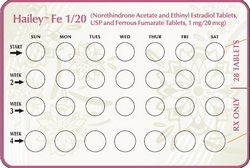
Hailey Fe 1 / 20 Review
- Active Ingredient: Norgestimate / Ethinyl Estradiol
- Release Form: Pills
- Age: 18 - 45 years
- Average Price: $30

Ethinyl Estradiol / Norgestrel Review
- Active Ingredient: Ethinyl Estradiol / Norgestrel
- Release Form: Pills
- Age: 18 - 40 years
- Average Price: $30

Levlite Review
- Active Ingredient: Ethinylestradiol / Levonorgestrel
- Release Form: Pills
- Age: 18 - 40 years
- Average Price: $30 - $40

Ethinyl Estradiol / Norelgestromin Review
- Active Ingredient: Ethinyl Estradiol / Norelgestromin
- Release Form: Transdermal Patch
- Age: 18 - 45 years
- Average Price: $30 - $40
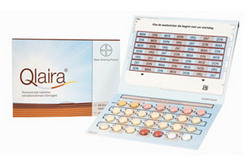
Qlaira Review
- Active Ingredient: Estradiol Valerate / Dienogest
- Release Form: Pills
- Age: 18 - 40 years
- Average Price: $30

Tulana Review
- Active Ingredient: Norethisterone
- Release Form: Pills
- Age: 18 - 45 years
- Average Price: $30

Levonest Review
- Active Ingredient: Ethinylestradiol / Levonorgestrel
- Release Form: Pills
- Age: 18 - 40 years
- Average Price: $30

Lomedia 24 Fe Review
- Active Ingredient: Ethinyl Estradiol / Norethindrone
- Release Form: Pills
- Age: 15 - 45 years
- Average Price: $30 - $40

Ayuna Review
- Active Ingredient: Ethinylestradiol / Levonorgestrel
- Release Form: Pills
- Age: 18 - 40 years
- Average Price: $30

Microgestin 24 Fe Review
- Active Ingredient: Ethinyl Estradiol / Norethindrone
- Release Form: Pills
- Age: 18 - 45 years
- Average Price: $30 - $50

Sronyx Review
- Active Ingredient: Ethinylestradiol / Levonorgestrel
- Release Form: Pills
- Age: 18 - 40 years
- Average Price: $30

Nexesta Fe Review
- Active Ingredient: Ethinyl Estradiol / Norethindrone
- Release Form: Pills
- Age: 18 - 40 years
- Average Price: $30 - $40

Nortrel 7/7/7 Review
- Active Ingredient: Ethinyl Estradiol / Norethindrone
- Release Form: Pills
- Age: 18 - 40 years
- Average Price: $32

Nylia 1 / 35 Review
- Active Ingredient: Ethinyl Estradiol / Norethindrone
- Release Form: Pills
- Age: 18 - 45 years
- Average Price: $32

Delyla Review
- Active Ingredient: Ethinylestradiol / Levonorgestrel
- Release Form: Pills
- Age: 18 - 40 years
- Average Price: $32

Alyacen 1 / 35 Review
- Active Ingredient: Ethinyl Estradiol / Norethindrone
- Release Form: Pills
- Age: 18 - 45 years
- Average Price: $32

Altavera Review
- Active Ingredient: Ethinylestradiol / Levonorgestrel
- Release Form: Pills
- Age: 18 - 40 years
- Average Price: $32

Vienva Review
- Active Ingredient: Ethinylestradiol / Levonorgestrel
- Release Form: Pills
- Age: 18 - 35 years
- Average Price: $32
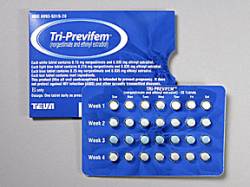
Tri-Previfem Review
- Active Ingredient: Norgestimate / Ethinyl Estradiol
- Release Form: Pills
- Age: 18 - 40 years
- Average Price: $33

Deblitane Review
- Active Ingredient: Norethisterone
- Release Form: Pills
- Age: 15 - 65 years
- Average Price: $33

Levora Review
- Active Ingredient: Ethinylestradiol / Levonorgestrel
- Release Form: Pills
- Age: 18 - 35 years
- Average Price: $33

Dasetta 1 / 35 Review
- Active Ingredient: Ethinyl Estradiol / Norethindrone
- Release Form: Pills
- Age: 15 - 45 years
- Average Price: $33

Norinyl 1+35 Review
- Active Ingredient: Ethinyl Estradiol / Norethindrone
- Release Form: Pills
- Age: 18 - 40 years
- Average Price: $33

Nortrel 1/35 Review
- Active Ingredient: Ethinyl Estradiol / Norethindrone
- Release Form: Pills
- Age: 18 - 40 years
- Average Price: $33

Norethindrone Review
- Active Ingredient: Norethisterone
- Release Form: Pills
- Age: 15 - 65 years
- Average Price: $33

Portia Review
- Active Ingredient: Ethinylestradiol / Levonorgestrel
- Release Form: Pills
- Age: 18 - 35 years
- Average Price: $34

Larin 1.5 / 30 Review
- Active Ingredient: Ethinyl Estradiol / Norethindrone
- Release Form: Pills
- Age: 18 - 45 years
- Average Price: $34

Tri-Linyah Review
- Active Ingredient: Norgestimate / Ethinyl Estradiol
- Release Form: Pills
- Age: 18 - 35 years
- Average Price: $35

Fallback Solo Review
- Active Ingredient: Levonorgestrel
- Release Form: Pills
- Age: 18 - 65 years
- Average Price: $35

Next Choice Review
- Active Ingredient: Levonorgestrel
- Release Form: Pills
- Age: 18 - 65 years
- Average Price: $35 - $60

Tri-Estarylla Review
- Active Ingredient: Norgestimate / Ethinyl Estradiol
- Release Form: Pills
- Age: 18 - 40 years
- Average Price: $35

Solia Review
- Active Ingredient: Ethinyl Estradiol / Desogestrel
- Release Form: Pills
- Age: 18 - 40 years
- Average Price: $35

Junel 1 / 20 Review
- Active Ingredient: Ethinyl Estradiol / Norethindrone
- Release Form: Pills
- Age: 18 - 40 years
- Average Price: $35

Camila Review
- Active Ingredient: Norethisterone
- Release Form: Pills
- Age: 18 - 40 years
- Average Price: $35

Trinessa Lo Review
- Active Ingredient: Norgestimate / Ethinyl Estradiol
- Release Form: Pills
- Age: 18 - 40 years
- Average Price: $35
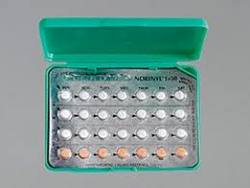
Mestranol / Norethindrone Review
- Active Ingredient: Norethindrone / Mestranol
- Release Form: Pills
- Age: 18 - 40 years
- Average Price: $35

Wera Review
- Active Ingredient: Ethinyl Estradiol / Norethindrone
- Release Form: Pills
- Age: 18 - 40 years
- Average Price: $35
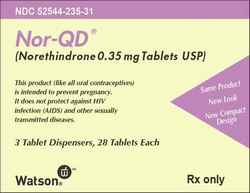
Nor-QD Review
- Active Ingredient: Norethisterone
- Release Form: Pills
- Age: 18 - 45 years
- Average Price: $35
Modicon Review
- Active Ingredient: Ethinyl Estradiol / Norethindrone
- Release Form: Pills
- Age: 18 - 45 years
- Average Price: $35

Plan B Review
- Active Ingredient: Levonorgestrel
- Release Form: Pills
- Age: 18 - 65 years
- Average Price: $35 - $60

Lutera Review
- Active Ingredient: Ethinylestradiol / Levonorgestrel
- Release Form: Pills
- Age: 14 - 40 years
- Average Price: $35

Necon 1 / 35 Review
- Active Ingredient: Ethinyl Estradiol / Norethindrone
- Release Form: Pills
- Age: 18 - 40 years
- Average Price: $35

Lessina Review
- Active Ingredient: Ethinylestradiol / Levonorgestrel
- Release Form: Pills
- Age: 18 - 45 years
- Average Price: $35

Myzilra Review
- Active Ingredient: Ethinylestradiol / Levonorgestrel
- Release Form: Pills
- Age: 15 - 45 years
- Average Price: $35

Juleber Review
- Active Ingredient: Ethinyl Estradiol / Desogestrel
- Release Form: Pills
- Age: 18 - 40 years
- Average Price: $35

Blisovi 24 Fe Review
- Active Ingredient: Ethinyl Estradiol / Norethindrone
- Release Form: Pills
- Age: 18 - 40 years
- Average Price: $35

Cyclafem 1/35 Review
- Active Ingredient: Ethinyl Estradiol / Norethindrone
- Release Form: Pills
- Age: 18 - 40 years
- Average Price: $35

Larin 1/20 Review
- Active Ingredient: Ethinyl Estradiol / Norethindrone
- Release Form: Pills
- Age: 18 - 40 years
- Average Price: $35

Kalliga Review
- Active Ingredient: Ethinyl Estradiol / Desogestrel
- Release Form: Pills
- Age: 18 - 40 years
- Average Price: $35

Caziant Review
- Active Ingredient: Ethinyl Estradiol / Desogestrel
- Release Form: Pills
- Age: 18 - 40 years
- Average Price: $35 - $40

Larin Fe 1.5/30 Review
- Active Ingredient: Ethinyl Estradiol / Norethindrone
- Release Form: Pills
- Age: 18 - 40 years
- Average Price: $35

Cesia Review
- Active Ingredient: Ethinyl Estradiol / Desogestrel
- Release Form: Pills
- Age: 18 - 70 years
- Average Price: $35 - $40

Elinest Review
- Active Ingredient: Ethinyl Estradiol / Norgestrel
- Release Form: Pills
- Age: 18 - 45 years
- Average Price: $35

Larissia Review
- Active Ingredient: Ethinylestradiol / Levonorgestrel
- Release Form: Pills
- Age: 18 - 45 years
- Average Price: $37

Sharobel Review
- Active Ingredient: Norethisterone
- Release Form: Pills
- Age: 18 - 40 years
- Average Price: $37
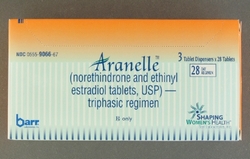
Aranelle Review
- Active Ingredient: Ethinyl Estradiol / Norethindrone
- Release Form: Pills
- Age: 18 - 40 years
- Average Price: $37

Norlyda Review
- Active Ingredient: Norethisterone
- Release Form: Pills
- Age: 18 - 45 years
- Average Price: $37

Tri-Norinyl Review
- Active Ingredient: Ethinyl Estradiol / Norethindrone
- Release Form: Pills
- Age: 18 - 45 years
- Average Price: $38

Mono-Linyah Review
- Active Ingredient: Norgestimate / Ethinyl Estradiol
- Release Form: Pills
- Age: 18 - 35 years
- Average Price: $38

Tri-Legest Review
- Active Ingredient: Ethinyl Estradiol / Norethindrone
- Release Form: Pills
- Age: 18 - 40 years
- Average Price: $40 - $50

Ulipristal Off Label Review
- Active Ingredient: Ulipristal Acetate
- Release Form: Pills
- Age: 18 - 65 years
- Average Price: $40 - $60

Heather Review
- Active Ingredient: Norethisterone
- Release Form: Pills
- Age: 18 - 45 years
- Average Price: $40

Ortho-Novum 1/50 Review
- Active Ingredient: Norethindrone / Mestranol
- Release Form: Pills
- Age: 18 - 45 years
- Average Price: $40

Jolivette Review
- Active Ingredient: Norethisterone
- Release Form: Pills
- Age: 18 - 35 years
- Average Price: $40

Leena Review
- Active Ingredient: Ethinyl Estradiol / Norethindrone
- Release Form: Pills
- Age: 18 - 40 years
- Average Price: $40

Beyaz Review
- Active Ingredient: Ethinyl Estradiol / Drospirenone / Levomefolate Calcium
- Release Form: Pills
- Age: 18 - 40 years
- Average Price: $40 - $50

Wymzya Fe Review
- Active Ingredient: Ethinyl Estradiol / Norethindrone
- Release Form: Pills
- Age: 18 - 40 years
- Average Price: $40

Triphasil Review
- Active Ingredient: Ethinylestradiol / Levonorgestrel
- Release Form: Pills
- Age: 14 - 40 years
- Average Price: $40

Ulipristal Review
- Active Ingredient: Ulipristal Acetate
- Release Form: Pills
- Age: 18 - 65 years
- Average Price: $40 - $68

Option 2 (Levonorgestrel Tablet 1.5 mg) Emergency Contraceptive Review
- Active Ingredient: Levonorgestrel
- Release Form: Pills
- Age: 18 - 65 years
- Average Price: $40

Plan B One-Step Emergency Contraceptive (Levonorgestrel Tablet 1.5 mg) Review
- Active Ingredient: Levonorgestrel
- Release Form: Pills
- Age: 18 - 65 years
- Average Price: $40 - $50

Dasetta 7/7/7 Review
- Active Ingredient: Ethinyl Estradiol / Norethindrone
- Release Form: Pills
- Age: 18 - 40 years
- Average Price: $40

Ethinyl Estradiol/Folic Acid/Levonorgestrel Review
- Active Ingredient: Ethinylestradiol / Levonorgestrel
- Release Form: Pills
- Age: 18 - 40 years
- Average Price: $40 - $50

Kaitlib Fe Review
- Active Ingredient: Ethinyl Estradiol / Norethindrone
- Release Form: Pills
- Age: 18 - 40 years
- Average Price: $40 - $50

Loestrin Fe 1.5 / 30 Review
- Active Ingredient: Ethinyl Estradiol / Norethindrone
- Release Form: Pills
- Age: 18 - 40 years
- Average Price: $40

Mibelas 24 Fe Review
- Active Ingredient: Ethinyl Estradiol / Norethindrone
- Release Form: Pills
- Age: 18 - 40 years
- Average Price: $40

Cyclessa Review
- Active Ingredient: Ethinyl Estradiol / Desogestrel
- Release Form: Pills
- Age: 18 - 40 years
- Average Price: $40

Generess Fe Review
- Active Ingredient: Ethinyl Estradiol / Norethindrone
- Release Form: Pills
- Age: 18 - 35 years
- Average Price: $42

Orsythia Review
- Active Ingredient: Ethinylestradiol / Levonorgestrel
- Release Form: Pills
- Age: 18 - 45 years
- Average Price: $42

Take Action Emergency Contraceptive Levonorgestrel 1.5mg Review
- Active Ingredient: Levonorgestrel
- Release Form: Pills
- Age: 18 - 65 years
- Average Price: $45

Ovral 28 Review
- Active Ingredient: Ethinyl Estradiol / Norgestrel
- Release Form: Pills
- Age: 18 - 40 years
- Average Price: $45

Ogestrel 0.5 / 50 Review
- Active Ingredient: Ethinyl Estradiol / Norgestrel
- Release Form: Pills
- Age: 18 - 40 years
- Average Price: $45

Gildess 1.5 / 30 Review
- Active Ingredient: Ethinyl Estradiol / Norethindrone
- Release Form: Pills
- Age: 18 - 40 years
- Average Price: $45

Marlissa Review
- Active Ingredient: Ethinylestradiol / Levonorgestrel
- Release Form: Pills
- Age: 18 - 35 years
- Average Price: $47

Ethinyl Estradiol / Etonogestrel
- Active Ingredient: Ethinylestradiol / Etonogestrel
- Release Form: Pills
- Age: 18 - 40 years
- Average Price: $50

Simpesse Review
- Active Ingredient: Ethinylestradiol / Levonorgestrel
- Release Form: Pills
- Age: 18 - 40 years
- Average Price: $50

Ella Review
- Active Ingredient: Ulipristal Acetate
- Release Form: Pills
- Age: 16 - 35 years
- Average Price: $50.00

Ortho Micronor Review
- Active Ingredient: Norethisterone
- Release Form: Pills
- Age: 18 - 40 years
- Average Price: $50 – 60
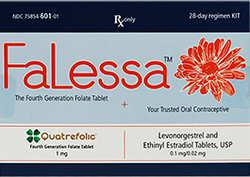
FaLessa Kit Review
- Active Ingredient: Ethinylestradiol / Levonorgestrel
- Release Form: Pills
- Age: 18 - 40 years
- Average Price: $50

Jaimiess Review
- Active Ingredient: Ethinylestradiol / Levonorgestrel
- Release Form: Pills
- Age: 18 - 40 years
- Average Price: $50

Lo-Zumandimine Review
- Active Ingredient: Drospirenone / Ethinyl Estradiol
- Release Form: Pills
- Age: 18 - 40 years
- Average Price: $50

Jenest 28 Review
- Active Ingredient: Ethinyl Estradiol / Norethindrone
- Release Form: Pills
- Age: 18 - 45 years
- Average Price: $50

Amethyst Review
- Active Ingredient: Ethinylestradiol / Levonorgestrel
- Release Form: Pills
- Age: 18 - 40 years
- Average Price: $50

Briellyn Review
- Active Ingredient: Ethinyl Estradiol / Norethindrone
- Release Form: Pills
- Age: 18 - 40 years
- Average Price: $50 - $60

Quasense Review
- Active Ingredient: Ethinylestradiol / Levonorgestrel
- Release Form: Pills
- Age: 19 - 45 years
- Average Price: $50

Setlakin Review
- Active Ingredient: Ethinylestradiol / Levonorgestrel
- Release Form: Pills
- Age: 18 - 40 years
- Average Price: $50

Melodetta 24 Fe Review
- Active Ingredient: Ethinyl Estradiol / Norethindrone
- Release Form: Pills
- Age: 18 - 45 years
- Average Price: $50 - $100

Drospirenone / Ethinyl Estradiol Review
- Active Ingredient: Drospirenone / Ethinyl Estradiol
- Release Form: Pills
- Age: 18 - 35 years
- Average Price: $56

Ovcon 35 Review
- Active Ingredient: Ethinyl Estradiol / Norethindrone
- Release Form: Pills
- Age: 18 - 40 years
- Average Price: $60

Tri-Lo-Mili Review
- Active Ingredient: Norgestimate / Ethinyl Estradiol
- Release Form: Pills
- Age: 18 - 45 years
- Average Price: $60

Zeosa Review
- Active Ingredient: Ethinyl Estradiol / Norethindrone
- Release Form: Pills
- Age: 18 - 40 years
- Average Price: $60

Ella Review
- Active Ingredient: Ulipristal Acetate
- Release Form: Pills
- Age: 18 - 65 years
- Average Price: $67

Ovcon 50 Review
- Active Ingredient: Ethinyl Estradiol / Norethindrone
- Release Form: Pills
- Age: 18 - 40 years
- Average Price: $70

Vestura Review
- Active Ingredient: Drospirenone / Ethinyl Estradiol
- Release Form: Pills
- Age: 18 - 40 years
- Average Price: $70
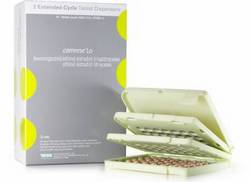
CamreseLo Review
- Active Ingredient: Ethinylestradiol / Levonorgestrel
- Release Form: Pills
- Age: 18 - 40 years
- Average Price: $75

Zenchent Fe Review
- Active Ingredient: Ethinyl Estradiol / Norethindrone
- Release Form: Pills
- Age: 18 - 45 years
- Average Price: $75

Loryna Review
- Active Ingredient: Drospirenone / Ethinyl Estradiol
- Release Form: Pills
- Age: 18 - 35 years
- Average Price: $79

Lo Simpesse Review
- Active Ingredient: Ethinylestradiol / Levonorgestrel
- Release Form: Pills
- Age: 18 - 40 years
- Average Price: $80

Demulen 1/50-21/28 Review
- Active Ingredient: Ethinyl Estradiol / Ethynodiol Diacetate
- Release Form: Pills
- Age: 18 - 35 years
- Average Price: $82.00

Amethia Lo Review
- Active Ingredient: Ethinylestradiol / Levonorgestrel
- Release Form: Pills
- Age: 18 - 40 years
- Average Price: $90 - $140

Larin 24 Fe Review
- Active Ingredient: Ethinyl Estradiol / Norethindrone
- Release Form: Pills
- Age: 18 - 45 years
- Average Price: $90

Lo Loestrin Fe Review
- Active Ingredient: Ethinyl Estradiol / Norethindrone
- Release Form: Pills
- Age: 17 - 35 years
- Average Price: $100 - $125
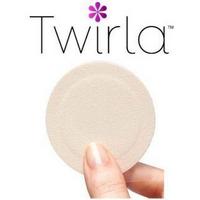
Twirla Review
- Active Ingredient: Ethinylestradiol / Levonorgestrel
- Release Form: Transdermal Patch
- Age: 18 - 45 years
- Average Price: $3

Kurvelo Review
- Active Ingredient: Ethinylestradiol / Levonorgestrel
- Release Form: Pills
- Age: 18 - 70 years
- Average Price: $9

Ortho-Cyclen Review
- Active Ingredient: Norgestimate / Ethinyl Estradiol
- Release Form: Pills
- Age: 18 - 35 years
- Average Price: $10
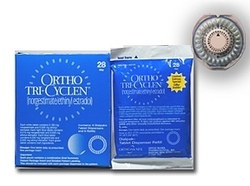
Ortho Tri-Cyclen Review
- Active Ingredient: Norgestimate / Ethinyl Estradiol
- Release Form: Pills
- Age: 18 - 35 years
- Average Price: $10

Jencycla Review
- Active Ingredient: Norethisterone
- Release Form: Pills
- Age: 18 - 45 years
- Average Price: $10 - $20

Provera Review
- Active Ingredient: Medroxyprogesterone Acetate
- Release Form: Pills, Suspension for Injection
- Age: 18 - 45 years
- Average Price: $10

Medroxyprogesterone Review
- Active Ingredient: Medroxyprogesterone Acetate
- Release Form: Pills, Suspension for Injection
- Age: 18 - 45 years
- Average Price: $10

Ethinyl Estradiol / Norgestimate Review
- Active Ingredient: Norgestimate / Ethinyl Estradiol
- Release Form: Pills
- Age: 18 - 35 years
- Average Price: $10

Errin Review
- Active Ingredient: Ethinylestradiol / Levonorgestrel
- Release Form: Pills
- Age: 18 - 65 years
- Average Price: $10 - $15

Sprintec Review
- Active Ingredient: Norgestimate / Ethinyl Estradiol
- Release Form: Pills
- Age: 18 - 35 years
- Average Price: $10 - $20

Ethinyl Estradiol / Norethindrone Review
- Active Ingredient: Ethinyl Estradiol / Norethindrone
- Release Form: Pills
- Age: 15 - 45 years
- Average Price: $12 - $17

Microgestin 1 / 20 Review
- Active Ingredient: Ethinyl Estradiol / Norethindrone
- Release Form: Pills
- Age: 18 - 45 years
- Average Price: $14 - $20
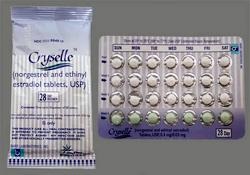
Cryselle Review
- Active Ingredient: Ethinyl Estradiol / Norgestrel
- Release Form: Pills
- Age: 18 - 45 years
- Average Price: $15

AfterPill Review
- Active Ingredient: Levonorgestrel
- Release Form: Pills
- Age: 16 - 65 years
- Average Price: $15

Rugby Levonorgestrel Tablet Review
- Active Ingredient: Levonorgestrel
- Release Form: Pills
- Age: 16 - 65 years
- Average Price: $15 - $40

Lyza Review
- Active Ingredient: Norethisterone
- Release Form: Pills
- Age: 18 - 40 years
- Average Price: $15 - $20

Aviane Review
- Active Ingredient: Ethinylestradiol / Levonorgestrel
- Release Form: Pills
- Age: 14 - 40 years
- Average Price: $15

Morning After Review
- Active Ingredient: Levonorgestrel
- Release Form: Pills
- Age: 16 - 65 years
- Average Price: $15

Blisovi Fe 1 / 20 Review
- Active Ingredient: Ethinyl Estradiol / Norethindrone
- Release Form: Pills
- Age: 18 - 45 years
- Average Price: $15 - $25

Junel Fe 1 / 20 Review
- Active Ingredient: Ethinyl Estradiol / Norethindrone
- Release Form: Pills
- Age: 18 - 35 years
- Average Price: $15

New Day Review
- Active Ingredient: Levonorgestrel
- Release Form: Pills
- Age: 16 - 65 years
- Average Price: $15
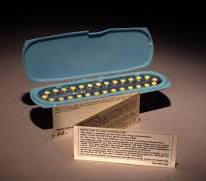
Ovrette Review
- Active Ingredient: Norgestrel
- Release Form: Pills
- Age: 18 - 45 years
- Average Price: $15

Microgestin Fe 1/20 Review
- Active Ingredient: Ethinyl Estradiol / Norethindrone
- Release Form: Pills
- Age: 15 - 45 years
- Average Price: $15

Apri Review
- Active Ingredient: Ethinyl Estradiol / Desogestrel
- Release Form: Pills
- Age: 18 - 40 years
- Average Price: $15 - $20

Kelnor 1/35 Review
- Active Ingredient: Ethinyl Estradiol / Ethynodiol Diacetate
- Release Form: Pills
- Age: 18 - 45 years
- Average Price: $15

Tri-Lo-Estarylla Review
- Active Ingredient: Norgestimate / Ethinyl Estradiol
- Release Form: Pills
- Age: 15 - 45 years
- Average Price: $16
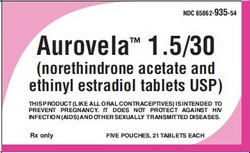
Aurovela Fe 1.5 / 30 Review
- Active Ingredient: Ethinyl Estradiol / Norethindrone
- Release Form: Pills
- Age: 18 - 45 years
- Average Price: $16

React Review
- Active Ingredient: Levonorgestrel
- Release Form: Pills
- Age: 14 - 35 years
- Average Price: $16 - $20

Larin Fe 1 / 20 Review
- Active Ingredient: Ethinyl Estradiol / Norethindrone
- Release Form: Pills
- Age: 18 - 45 years
- Average Price: $16

Necon 0.5 / 35 Review
- Active Ingredient: Ethinyl Estradiol / Norethindrone
- Release Form: Pills
- Age: 15 - 45 years
- Average Price: $17 - $25

MonoNessa Review
- Active Ingredient: Norgestimate / Ethinyl Estradiol
- Release Form: Pills
- Age: 18 - 35 years
- Average Price: $18

Ortho Novum 1/35 Review
- Active Ingredient: Ethinyl Estradiol / Norethindrone
- Release Form: Pills
- Age: 15 - 45 years
- Average Price: $18

Necon 7 / 7 / 7 Review
- Active Ingredient: Ethinyl Estradiol / Norethindrone
- Release Form: Pills
- Age: 15 - 45 years
- Average Price: $18 - $30

Microgestin Fe 1.5/30 Review
- Active Ingredient: Ethinyl Estradiol / Norethindrone
- Release Form: Pills
- Age: 15 - 45 years
- Average Price: $18

Cyred Review
- Active Ingredient: Ethinyl Estradiol / Desogestrel
- Release Form: Pills
- Age: 15 - 45 years
- Average Price: $18

Falmina Review
- Active Ingredient: Ethinylestradiol / Levonorgestrel
- Release Form: Pills
- Age: 18 - 45 years
- Average Price: $18 - $20

Levlen Review
- Active Ingredient: Ethinylestradiol / Levonorgestrel
- Release Form: Pills
- Age: 18 - 45 years
- Average Price: $18

Ortho Tri-Cyclen Lo Review
- Active Ingredient: Norgestimate / Ethinyl Estradiol
- Release Form: Pills
- Age: 18 - 35 years
- Average Price: $19
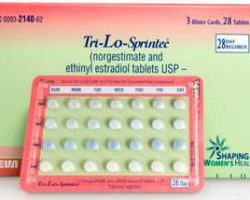
Tri-Lo-Sprintec Review
- Active Ingredient: Norgestimate / Ethinyl Estradiol
- Release Form: Pills
- Age: 18 - 35 years
- Average Price: $19 - $20

Gildagia Review
- Active Ingredient: Ethinyl Estradiol / Norethindrone
- Release Form: Pills
- Age: 18 - 45 years
- Average Price: $19 - $25

Alesse 21/28 Review
- Active Ingredient: Ethinylestradiol / Levonorgestrel
- Release Form: Pills
- Age: 18 - 40 years
- Average Price: $19 - $23

Balziva Review
- Active Ingredient: Ethinyl Estradiol / Norethindrone
- Release Form: Pills
- Age: 18 - 35 years
- Average Price: $19 - $25

Gildess Fe 1.5/30 Review
- Active Ingredient: Ethinyl Estradiol / Norethindrone
- Release Form: Pills
- Age: 18 - 40 years
- Average Price: $20

Previfem Review
- Active Ingredient: Norgestimate / Ethinyl Estradiol
- Release Form: Pills
- Age: 18 - 35 years
- Average Price: $20

Incassia Review
- Active Ingredient: Norethisterone
- Release Form: Pills
- Age: 18 - 40 years
- Average Price: $20 - $30

Yasmin 28 Review
- Active Ingredient: Drospirenone / Ethinyl Estradiol
- Release Form: Pills
- Age: 18 - 40 years
- Average Price: $20

Tarina 24 Fe Review
- Active Ingredient: Ethinyl Estradiol / Norethindrone
- Release Form: Pills
- Age: 18 - 40 years
- Average Price: $20

Preventeza Review
- Active Ingredient: Levonorgestrel
- Release Form: Pills
- Age: 16 - 65 years
- Average Price: $20

Yaz Review
- Active Ingredient: Drospirenone / Ethinyl Estradiol
- Release Form: Pills
- Age: 18 - 40 years
- Average Price: $20

Pirmella 7/7/7 Review
- Active Ingredient: Ethinyl Estradiol / Norethindrone
- Release Form: Pills
- Age: 18 - 40 years
- Average Price: $20 - $30

Aubra Review
- Active Ingredient: Ethinylestradiol / Levonorgestrel
- Release Form: Pills
- Age: 18 - 40 years
- Average Price: $20

Levonorgestrel Tablets 0.75mg Emergency Contraceptive Review
- Active Ingredient: Levonorgestrel
- Release Form: Pills
- Age: 18 - 65 years
- Average Price: $20 - $25

Zenchent Review
- Active Ingredient: Ethinyl Estradiol / Norethindrone
- Release Form: Pills
- Age: 15 - 45 years
- Average Price: $20

Ortho-Novum 7 / 7 / 7 Review
- Active Ingredient: Ethinyl Estradiol / Norethindrone
- Release Form: Pills
- Age: 18 - 45 years
- Average Price: $20
Opcicon One-Step Review
- Active Ingredient: Levonorgestrel
- Release Form: Pills
- Age: 18 - 65 years
- Average Price: $20 - $40

Lo-Ovral (21/28) Review
- Active Ingredient: Ethinyl Estradiol / Norgestrel
- Release Form: Pills
- Age: 18 - 45 years
- Average Price: $20

My Choice Emergency Contraceptive (Levonorgestrel Tablet 1.5 mg) Review
- Active Ingredient: Levonorgestrel
- Release Form: Pills
- Age: 18 - 65 years
- Average Price: $20 - $40

Iclevia Review
- Active Ingredient: Ethinylestradiol / Levonorgestrel
- Release Form: Pills
- Age: 18 - 45 years
- Average Price: $20.00

Yasmin 21 Review
- Active Ingredient: Drospirenone / Ethinyl Estradiol
- Release Form: Pills
- Age: 18 - 40 years
- Average Price: $20

Ethinyl Estradiol / Levonorgestrel Review
- Active Ingredient: Ethinylestradiol / Levonorgestrel
- Release Form: Pills
- Age: 14 - 40 years
- Average Price: $20

Loestrin 21 1.5 / 30 Review
- Active Ingredient: Ethinyl Estradiol / Norethindrone
- Release Form: Pills
- Age: 18 - 35 years
- Average Price: $20
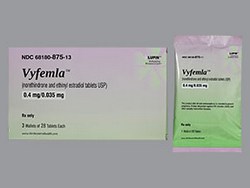
Vyfemla Review
- Active Ingredient: Ethinyl Estradiol / Norethindrone
- Release Form: Pills
- Age: 18 - 35 years
- Average Price: $20

Estrostep Fe Review
- Active Ingredient: Ethinyl Estradiol / Norethindrone
- Release Form: Pills
- Age: 18 - 40 years
- Average Price: $20 - $40
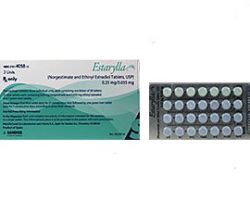
Estarylla Review
- Active Ingredient: Norgestimate / Ethinyl Estradiol
- Release Form: Pills
- Age: 18 - 35 years
- Average Price: $20

Demulen 1/35-21/28 Review
- Active Ingredient: Ethinyl Estradiol / Ethynodiol Diacetate
- Release Form: Pills
- Age: 14 - 45 years
- Average Price: $20.00

Jasmiel Review
- Active Ingredient: Drospirenone / Ethinyl Estradiol
- Release Form: Pills
- Age: 14 - 45 years
- Average Price: $21.00

Chateal Review
- Active Ingredient: Ethinylestradiol / Levonorgestrel
- Release Form: Pills
- Age: 18 - 40 years
- Average Price: $22

Pimtrea Review
- Active Ingredient: Estradiol Valerate / Dienogest
- Release Form: Pills
- Age: 18 - 40 years
- Average Price: $23

Tilia Fe Review
- Active Ingredient: Ethinyl Estradiol / Norethindrone
- Release Form: Pills
- Age: 15 - 45 years
- Average Price: $23 - $25

Estrostep 21 Review
- Active Ingredient: Ethinyl Estradiol / Norethindrone
- Release Form: Pills
- Age: 15 - 45 years
- Average Price: $23.00

Ethinyl Estradiol / Ethynodiol
- Active Ingredient: Ethinyl Estradiol / Ethynodiol
- Release Form: Pills
- Age: 18 - 40 years
- Average Price: $23
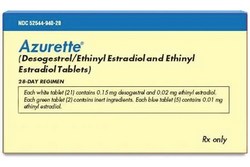
Azurette Review
- Active Ingredient: Ethinyl Estradiol / Desogestrel
- Release Form: Pills
- Age: 18 - 40 years
- Average Price: $24

Emoquette Review
- Active Ingredient: Ethinyl Estradiol / Desogestrel
- Release Form: Pills
- Age: 18 - 40 years
- Average Price: $25
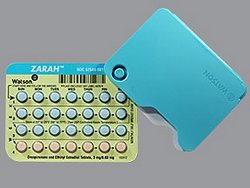
Zarah Review
- Active Ingredient: Drospirenone / Ethinyl Estradiol
- Release Form: Pills
- Age: 18 - 40 years
- Average Price: $25

Simliya Review
- Active Ingredient: Ethinyl Estradiol / Desogestrel
- Release Form: Pills
- Age: 18 - 35 years
- Average Price: $25

Kariva Review
- Active Ingredient: Ethinyl Estradiol / Desogestrel
- Release Form: Pills
- Age: 18 - 40 years
- Average Price: $25

Reclipsen Review
- Active Ingredient: Ethinyl Estradiol / Desogestrel
- Release Form: Pills
- Age: 18 - 40 years
- Average Price: $25 - $30

Ortho-Cept Review
- Active Ingredient: Ethinyl Estradiol / Desogestrel
- Release Form: Pills
- Age: 18 - 45 years
- Average Price: $25

Viorele Review
- Active Ingredient: Ethinyl Estradiol / Desogestrel
- Release Form: Pills
- Age: 18 - 40 years
- Average Price: $25
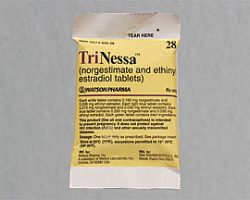
TriNessa Review
- Active Ingredient: Norgestimate / Ethinyl Estradiol
- Release Form: Pills
- Age: 18 - 35 years
- Average Price: $25
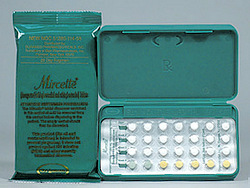
Mircette Review
- Active Ingredient: Ethinyl Estradiol / Desogestrel
- Release Form: Pills
- Age: 18 - 40 years
- Average Price: $25

Tri-Levlen Review
- Active Ingredient: Ethinylestradiol / Levonorgestrel
- Release Form: Pills
- Age: 18 - 45 years
- Average Price: $25

Bekyree Review
- Active Ingredient: Ethinyl Estradiol / Desogestrel
- Release Form: Pills
- Age: 18 - 40 years
- Average Price: $25
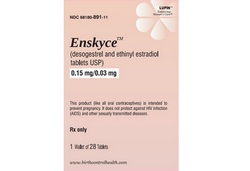
Enskyce Review
- Active Ingredient: Ethinyl Estradiol / Desogestrel
- Release Form: Pills
- Age: 18 - 40 years
- Average Price: $25

Kimidess Review
- Active Ingredient: Ethinyl Estradiol / Desogestrel
- Release Form: Pills
- Age: 18 - 40 years
- Average Price: $25

Tri-Sprintec Review
- Active Ingredient: Norgestimate / Ethinyl Estradiol
- Release Form: Pills
- Age: 14 - 35 years
- Average Price: $25

Nora-Be Review
- Active Ingredient: Norethisterone
- Release Form: Pills
- Age: 18 - 40 years
- Average Price: $25 - $30

Zovia 1 / 35E Review
- Active Ingredient: Ethinyl Estradiol / Ethynodiol
- Release Form: Pills
- Age: 18 - 40 years
- Average Price: $25

Volnea Review
- Active Ingredient: Ethinyl Estradiol / Desogestrel
- Release Form: Pills
- Age: 18 - 40 years
- Average Price: $25

Microgestin 1.5 / 30 Review
- Active Ingredient: Ethinyl Estradiol / Norethindrone
- Release Form: Pills
- Age: 18 - 45 years
- Average Price: $25
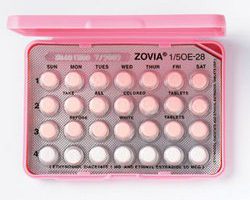
Zovia 1/50E Review
- Active Ingredient: Ethinyl Estradiol / Ethynodiol Diacetate
- Release Form: Pills
- Age: 18 - 45 years
- Average Price: $25

Mili Review
- Active Ingredient: Norgestimate / Ethinyl Estradiol
- Release Form: Pills
- Age: 18 - 40 years
- Average Price: $25

Syeda Review
- Active Ingredient: Drospirenone / Ethinyl Estradiol
- Release Form: Pills
- Age: 15 - 45 years
- Average Price: $25
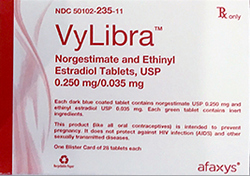
VyLibra Review
- Active Ingredient: Norgestimate / Ethinyl Estradiol
- Release Form: Pills
- Age: 18 - 40 years
- Average Price: $25

Norlyroc Review
- Active Ingredient: Norethisterone
- Release Form: Pills
- Age: 14 - 35 years
- Average Price: $25

Desogen Review
- Active Ingredient: Ethinyl Estradiol / Desogestrel
- Release Form: Pills
- Age: 18 - 40 years
- Average Price: $25

Gianvi Review
- Active Ingredient: Drospirenone / Ethinyl Estradiol
- Release Form: Pills
- Age: 18 - 40 years
- Average Price: $27

EContra EZ Review
- Active Ingredient: Levonorgestrel
- Release Form: Pills
- Age: 15 - 65 years
- Average Price: $27

Gildess Fe 1 / 20 Review
- Active Ingredient: Ethinyl Estradiol / Norethindrone
- Release Form: Pills
- Age: 18 - 45 years
- Average Price: $28

Junel Fe 1.5 / 30 Review
- Active Ingredient: Ethinyl Estradiol / Norethindrone
- Release Form: Pills
- Age: 18 - 45 years
- Average Price: $29

Loestrin 24 Fe Review
- Active Ingredient: Ethinyl Estradiol / Norethindrone
- Release Form: Pills
- Age: 18 - 45 years
- Average Price: $30

Nylia 7/7 /7 Review
- Active Ingredient: Ethinyl Estradiol / Norethindrone
- Release Form: Pills
- Age: 18 - 40 years
- Average Price: $30 - $40

Nikki Review
- Active Ingredient: Drospirenone / Ethinyl Estradiol
- Release Form: Pills
- Age: 18 - 40 years
- Average Price: $30

Junel 1.5/30 Review
- Active Ingredient: Ethinyl Estradiol / Norethindrone
- Release Form: Pills
- Age: 18 - 40 years
- Average Price: $30

Gildess 1/20 Review
- Active Ingredient: Ethinyl Estradiol / Norethindrone
- Release Form: Pills
- Age: 18 - 40 years
- Average Price: $30

Femcon Fe Review
- Active Ingredient: Ethinyl Estradiol / Norethindrone
- Release Form: Pills
- Age: 18 - 35 years
- Average Price: $30

Tarina Fe 1 / 20 Review
- Active Ingredient: Ethinyl Estradiol / Norethindrone
- Release Form: Pills
- Age: 18 - 45 years
- Average Price: $30

Necon 1 / 50 Review
- Active Ingredient: Norethindrone / Mestranol
- Release Form: Pills
- Age: 18 - 35 years
- Average Price: $30

Velivet Review
- Active Ingredient: Ethinyl Estradiol / Desogestrel
- Release Form: Pills
- Age: 18 - 40 years
- Average Price: $30

Tri-Mili Review
- Active Ingredient: Norgestimate / Ethinyl Estradiol
- Release Form: Pills
- Age: 18 - 40 years
- Average Price: $30

Taytulla Review
- Active Ingredient: Ethinyl Estradiol / Norethindrone
- Release Form: Pills
- Age: 18 - 40 years
- Average Price: $30
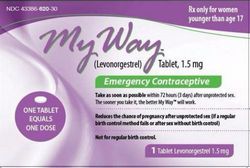
My Way Emergency Contraceptive (Levonorgestrel Tablet 1.5 mg) Review
- Active Ingredient: Levonorgestrel
- Release Form: Pills
- Age: 18 - 65 years
- Average Price: $30

Femynor Review
- Active Ingredient: Norgestimate / Ethinyl Estradiol
- Release Form: Pills
- Age: 18 - 45 years
- Average Price: $30

Tri-VyLibra Review
- Active Ingredient: Norgestimate / Ethinyl Estradiol
- Release Form: Pills
- Age: 18 - 40 years
- Average Price: $30

Philith Review
- Active Ingredient: Ethinyl Estradiol / Norethindrone
- Release Form: Pills
- Age: 15 - 45 years
- Average Price: $30

Tri-Legest Fe Review
- Active Ingredient: Ethinyl Estradiol / Norethindrone
- Release Form: Pills
- Age: 18 - 40 years
- Average Price: $30
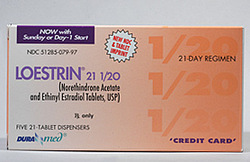
Loestrin 21 1 / 20 Review
- Active Ingredient: Ethinyl Estradiol / Norethindrone
- Release Form: Pills
- Age: 18 - 40 years
- Average Price: $30

Tri Femynor Review
- Active Ingredient: Norgestimate / Ethinyl Estradiol
- Release Form: Pills
- Age: 18 - 45 years
- Average Price: $30

Lillow Review
- Active Ingredient: Ethinylestradiol / Levonorgestrel
- Release Form: Pills
- Age: 18 - 40 years
- Average Price: $30

Low-Ogestrel-28 Review
- Active Ingredient: Ethinyl Estradiol / Norgestrel
- Release Form: Pills
- Age: 18 - 35 years
- Average Price: $30

Pirmella 1/35 Review
- Active Ingredient: Ethinyl Estradiol / Norethindrone
- Release Form: Pills
- Age: 18 - 40 years
- Average Price: $30

Kelnor 1 / 50 Review
- Active Ingredient: Ethinyl Estradiol / Ethynodiol Diacetate
- Release Form: Pills
- Age: 18 - 45 years
- Average Price: $30

Afirmelle Review
- Active Ingredient: Ethinylestradiol / Levonorgestrel
- Release Form: Pills
- Age: 18 - 40 years
- Average Price: $30

Aurovela 1.5/30 Review
- Active Ingredient: Ethinyl Estradiol / Norethindrone
- Release Form: Pills
- Age: 18 - 40 years
- Average Price: $30

Alyacen 7 / 7 / 7 Review
- Active Ingredient: Ethinyl Estradiol / Norethindrone
- Release Form: Pills
- Age: 18 - 45 years
- Average Price: $30

Aurovela 1/20 Review
- Active Ingredient: Ethinyl Estradiol / Norethindrone
- Release Form: Pills
- Age: 18 - 40 years
- Average Price: $30

Desogestrel / Ethinyl Estradiol Review
- Active Ingredient: Ethinyl Estradiol / Desogestrel
- Release Form: Pills
- Age: 18 - 40 years
- Average Price: $30

Isibloom Review
- Active Ingredient: Ethinyl Estradiol / Desogestrel
- Release Form: Pills
- Age: 18 - 40 years
- Average Price: $30

Aurovela 24 Fe Review
- Active Ingredient: Ethinyl Estradiol / Norethindrone
- Release Form: Pills
- Age: 18 - 40 years
- Average Price: $30

Ortho-Novum 10/11 Review
- Active Ingredient: Ethinyl Estradiol / Norethindrone
- Release Form: Pills
- Age: 18 - 45 years
- Average Price: $30

Tri-Lo-Marzia Review
- Active Ingredient: Norgestimate / Ethinyl Estradiol
- Release Form: Pills
- Age: 18 - 40 years
- Average Price: $30

Loestrin Fe 1 / 20 Review
- Active Ingredient: Ethinyl Estradiol / Norethindrone
- Release Form: Pills
- Age: 18 - 40 years
- Average Price: $30

Necon 10/11 Review
- Active Ingredient: Ethinyl Estradiol / Norethindrone
- Release Form: Pills
- Age: 18 - 45 years
- Average Price: $30

Genora 1/35 Review
- Active Ingredient: Ethinyl Estradiol / Norethindrone
- Release Form: Pills
- Age: 18 - 60 years
- Average Price: $30.00

Aurovela Fe 1/20 Review
- Active Ingredient: Ethinyl Estradiol / Norethindrone
- Release Form: Pills
- Age: 18 - 40 years
- Average Price: $30

Genora 1/50 Review
- Active Ingredient: Ethinyl Estradiol / Norethindrone
- Release Form: Pills
- Age: 18 - 60 years
- Average Price: $30.00

Next Choice One Dose Review
- Active Ingredient: Levonorgestrel
- Release Form: Pills
- Age: 18 - 65 years
- Average Price: $30

Nordette 28 Review
- Active Ingredient: Ethinylestradiol / Levonorgestrel
- Release Form: Pills
- Age: 18 - 45 years
- Average Price: $30

Nortrel 0.5/35 Review
- Active Ingredient: Ethinyl Estradiol / Norethindrone
- Release Form: Pills
- Age: 18 - 40 years
- Average Price: $30 - $40

Cyonanz Review
- Active Ingredient: Ethinyl Estradiol / Norethindrone
- Release Form: Pills
- Age: 18 - 40 years
- Average Price: $30 - $40

Blisovi Fe 1.5/30 Review
- Active Ingredient: Ethinyl Estradiol / Norethindrone
- Release Form: Pills
- Age: 18 - 40 years
- Average Price: $30

Cyclafem 7 / 7 / 7 Review
- Active Ingredient: Ethinyl Estradiol / Norethindrone
- Release Form: Pills
- Age: 18 - 40 years
- Average Price: $30

Mylan Review
- Active Ingredient: Norgestimate / Ethinyl Estradiol
- Release Form: Pills
- Age: 18 - 35 years
- Average Price: $30 - $50
Brevicon Review
- Active Ingredient: Ethinyl Estradiol / Norethindrone
- Release Form: Pills
- Age: 18 - 45 years
- Average Price: $30

Enpresse Review
- Active Ingredient: Ethinylestradiol / Levonorgestrel
- Release Form: Pills
- Age: 18 - 40 years
- Average Price: $30

Hailey 24 Fe Review
- Active Ingredient: Ethinyl Estradiol / Norethindrone
- Release Form: Pills
- Age: 18 - 40 years
- Average Price: $30 - $40

Gildess 24 Fe Review
- Active Ingredient: Ethinyl Estradiol / Norethindrone
- Release Form: Pills
- Age: 18 - 45 years
- Average Price: $30

EContra One-Step Review
- Active Ingredient: Levonorgestrel
- Release Form: Pills
- Age: 18 - 65 years
- Average Price: $30

Zumandimine Review
- Active Ingredient: Drospirenone / Ethinyl Estradiol
- Release Form: Pills
- Age: 18 - 45 years
- Average Price: $30

Junel Fe 24 Review
- Active Ingredient: Ethinyl Estradiol / Norethindrone
- Release Form: Pills
- Age: 18 - 40 years
- Average Price: $30 - $40

Trivora-28 Review
- Active Ingredient: Ethinylestradiol / Levonorgestrel
- Release Form: Pills
- Age: 18 - 40 years
- Average Price: $30

Aftera Review
- Active Ingredient: Levonorgestrel
- Release Form: Pills
- Age: 18 - 65 years
- Average Price: $30

Hailey Fe 1 / 20 Review
- Active Ingredient: Norgestimate / Ethinyl Estradiol
- Release Form: Pills
- Age: 18 - 45 years
- Average Price: $30

Ethinyl Estradiol / Norgestrel Review
- Active Ingredient: Ethinyl Estradiol / Norgestrel
- Release Form: Pills
- Age: 18 - 40 years
- Average Price: $30

Levlite Review
- Active Ingredient: Ethinylestradiol / Levonorgestrel
- Release Form: Pills
- Age: 18 - 40 years
- Average Price: $30 - $40

Ethinyl Estradiol / Norelgestromin Review
- Active Ingredient: Ethinyl Estradiol / Norelgestromin
- Release Form: Transdermal Patch
- Age: 18 - 45 years
- Average Price: $30 - $40

Qlaira Review
- Active Ingredient: Estradiol Valerate / Dienogest
- Release Form: Pills
- Age: 18 - 40 years
- Average Price: $30

Tulana Review
- Active Ingredient: Norethisterone
- Release Form: Pills
- Age: 18 - 45 years
- Average Price: $30

Levonest Review
- Active Ingredient: Ethinylestradiol / Levonorgestrel
- Release Form: Pills
- Age: 18 - 40 years
- Average Price: $30

Lomedia 24 Fe Review
- Active Ingredient: Ethinyl Estradiol / Norethindrone
- Release Form: Pills
- Age: 15 - 45 years
- Average Price: $30 - $40

Ayuna Review
- Active Ingredient: Ethinylestradiol / Levonorgestrel
- Release Form: Pills
- Age: 18 - 40 years
- Average Price: $30

Microgestin 24 Fe Review
- Active Ingredient: Ethinyl Estradiol / Norethindrone
- Release Form: Pills
- Age: 18 - 45 years
- Average Price: $30 - $50

Sronyx Review
- Active Ingredient: Ethinylestradiol / Levonorgestrel
- Release Form: Pills
- Age: 18 - 40 years
- Average Price: $30

Nexesta Fe Review
- Active Ingredient: Ethinyl Estradiol / Norethindrone
- Release Form: Pills
- Age: 18 - 40 years
- Average Price: $30 - $40

Nortrel 7/7/7 Review
- Active Ingredient: Ethinyl Estradiol / Norethindrone
- Release Form: Pills
- Age: 18 - 40 years
- Average Price: $32

Nylia 1 / 35 Review
- Active Ingredient: Ethinyl Estradiol / Norethindrone
- Release Form: Pills
- Age: 18 - 45 years
- Average Price: $32

Delyla Review
- Active Ingredient: Ethinylestradiol / Levonorgestrel
- Release Form: Pills
- Age: 18 - 40 years
- Average Price: $32

Alyacen 1 / 35 Review
- Active Ingredient: Ethinyl Estradiol / Norethindrone
- Release Form: Pills
- Age: 18 - 45 years
- Average Price: $32

Altavera Review
- Active Ingredient: Ethinylestradiol / Levonorgestrel
- Release Form: Pills
- Age: 18 - 40 years
- Average Price: $32

Vienva Review
- Active Ingredient: Ethinylestradiol / Levonorgestrel
- Release Form: Pills
- Age: 18 - 35 years
- Average Price: $32

Tri-Previfem Review
- Active Ingredient: Norgestimate / Ethinyl Estradiol
- Release Form: Pills
- Age: 18 - 40 years
- Average Price: $33

Deblitane Review
- Active Ingredient: Norethisterone
- Release Form: Pills
- Age: 15 - 65 years
- Average Price: $33

Levora Review
- Active Ingredient: Ethinylestradiol / Levonorgestrel
- Release Form: Pills
- Age: 18 - 35 years
- Average Price: $33

Dasetta 1 / 35 Review
- Active Ingredient: Ethinyl Estradiol / Norethindrone
- Release Form: Pills
- Age: 15 - 45 years
- Average Price: $33

Norinyl 1+35 Review
- Active Ingredient: Ethinyl Estradiol / Norethindrone
- Release Form: Pills
- Age: 18 - 40 years
- Average Price: $33

Nortrel 1/35 Review
- Active Ingredient: Ethinyl Estradiol / Norethindrone
- Release Form: Pills
- Age: 18 - 40 years
- Average Price: $33

Norethindrone Review
- Active Ingredient: Norethisterone
- Release Form: Pills
- Age: 15 - 65 years
- Average Price: $33

Portia Review
- Active Ingredient: Ethinylestradiol / Levonorgestrel
- Release Form: Pills
- Age: 18 - 35 years
- Average Price: $34

Larin 1.5 / 30 Review
- Active Ingredient: Ethinyl Estradiol / Norethindrone
- Release Form: Pills
- Age: 18 - 45 years
- Average Price: $34

Tri-Linyah Review
- Active Ingredient: Norgestimate / Ethinyl Estradiol
- Release Form: Pills
- Age: 18 - 35 years
- Average Price: $35

Fallback Solo Review
- Active Ingredient: Levonorgestrel
- Release Form: Pills
- Age: 18 - 65 years
- Average Price: $35

Next Choice Review
- Active Ingredient: Levonorgestrel
- Release Form: Pills
- Age: 18 - 65 years
- Average Price: $35 - $60

Tri-Estarylla Review
- Active Ingredient: Norgestimate / Ethinyl Estradiol
- Release Form: Pills
- Age: 18 - 40 years
- Average Price: $35

Solia Review
- Active Ingredient: Ethinyl Estradiol / Desogestrel
- Release Form: Pills
- Age: 18 - 40 years
- Average Price: $35

Junel 1 / 20 Review
- Active Ingredient: Ethinyl Estradiol / Norethindrone
- Release Form: Pills
- Age: 18 - 40 years
- Average Price: $35

Camila Review
- Active Ingredient: Norethisterone
- Release Form: Pills
- Age: 18 - 40 years
- Average Price: $35

Trinessa Lo Review
- Active Ingredient: Norgestimate / Ethinyl Estradiol
- Release Form: Pills
- Age: 18 - 40 years
- Average Price: $35

Mestranol / Norethindrone Review
- Active Ingredient: Norethindrone / Mestranol
- Release Form: Pills
- Age: 18 - 40 years
- Average Price: $35

Wera Review
- Active Ingredient: Ethinyl Estradiol / Norethindrone
- Release Form: Pills
- Age: 18 - 40 years
- Average Price: $35

Nor-QD Review
- Active Ingredient: Norethisterone
- Release Form: Pills
- Age: 18 - 45 years
- Average Price: $35
Modicon Review
- Active Ingredient: Ethinyl Estradiol / Norethindrone
- Release Form: Pills
- Age: 18 - 45 years
- Average Price: $35

Plan B Review
- Active Ingredient: Levonorgestrel
- Release Form: Pills
- Age: 18 - 65 years
- Average Price: $35 - $60

Lutera Review
- Active Ingredient: Ethinylestradiol / Levonorgestrel
- Release Form: Pills
- Age: 14 - 40 years
- Average Price: $35

Necon 1 / 35 Review
- Active Ingredient: Ethinyl Estradiol / Norethindrone
- Release Form: Pills
- Age: 18 - 40 years
- Average Price: $35

Lessina Review
- Active Ingredient: Ethinylestradiol / Levonorgestrel
- Release Form: Pills
- Age: 18 - 45 years
- Average Price: $35

Myzilra Review
- Active Ingredient: Ethinylestradiol / Levonorgestrel
- Release Form: Pills
- Age: 15 - 45 years
- Average Price: $35

Juleber Review
- Active Ingredient: Ethinyl Estradiol / Desogestrel
- Release Form: Pills
- Age: 18 - 40 years
- Average Price: $35

Blisovi 24 Fe Review
- Active Ingredient: Ethinyl Estradiol / Norethindrone
- Release Form: Pills
- Age: 18 - 40 years
- Average Price: $35

Cyclafem 1/35 Review
- Active Ingredient: Ethinyl Estradiol / Norethindrone
- Release Form: Pills
- Age: 18 - 40 years
- Average Price: $35

Larin 1/20 Review
- Active Ingredient: Ethinyl Estradiol / Norethindrone
- Release Form: Pills
- Age: 18 - 40 years
- Average Price: $35

Kalliga Review
- Active Ingredient: Ethinyl Estradiol / Desogestrel
- Release Form: Pills
- Age: 18 - 40 years
- Average Price: $35

Caziant Review
- Active Ingredient: Ethinyl Estradiol / Desogestrel
- Release Form: Pills
- Age: 18 - 40 years
- Average Price: $35 - $40

Larin Fe 1.5/30 Review
- Active Ingredient: Ethinyl Estradiol / Norethindrone
- Release Form: Pills
- Age: 18 - 40 years
- Average Price: $35

Cesia Review
- Active Ingredient: Ethinyl Estradiol / Desogestrel
- Release Form: Pills
- Age: 18 - 70 years
- Average Price: $35 - $40

Elinest Review
- Active Ingredient: Ethinyl Estradiol / Norgestrel
- Release Form: Pills
- Age: 18 - 45 years
- Average Price: $35

Larissia Review
- Active Ingredient: Ethinylestradiol / Levonorgestrel
- Release Form: Pills
- Age: 18 - 45 years
- Average Price: $37

Sharobel Review
- Active Ingredient: Norethisterone
- Release Form: Pills
- Age: 18 - 40 years
- Average Price: $37

Aranelle Review
- Active Ingredient: Ethinyl Estradiol / Norethindrone
- Release Form: Pills
- Age: 18 - 40 years
- Average Price: $37

Norlyda Review
- Active Ingredient: Norethisterone
- Release Form: Pills
- Age: 18 - 45 years
- Average Price: $37

Tri-Norinyl Review
- Active Ingredient: Ethinyl Estradiol / Norethindrone
- Release Form: Pills
- Age: 18 - 45 years
- Average Price: $38

Mono-Linyah Review
- Active Ingredient: Norgestimate / Ethinyl Estradiol
- Release Form: Pills
- Age: 18 - 35 years
- Average Price: $38

Tri-Legest Review
- Active Ingredient: Ethinyl Estradiol / Norethindrone
- Release Form: Pills
- Age: 18 - 40 years
- Average Price: $40 - $50

Ulipristal Off Label Review
- Active Ingredient: Ulipristal Acetate
- Release Form: Pills
- Age: 18 - 65 years
- Average Price: $40 - $60

Heather Review
- Active Ingredient: Norethisterone
- Release Form: Pills
- Age: 18 - 45 years
- Average Price: $40

Ortho-Novum 1/50 Review
- Active Ingredient: Norethindrone / Mestranol
- Release Form: Pills
- Age: 18 - 45 years
- Average Price: $40

Jolivette Review
- Active Ingredient: Norethisterone
- Release Form: Pills
- Age: 18 - 35 years
- Average Price: $40

Leena Review
- Active Ingredient: Ethinyl Estradiol / Norethindrone
- Release Form: Pills
- Age: 18 - 40 years
- Average Price: $40

Beyaz Review
- Active Ingredient: Ethinyl Estradiol / Drospirenone / Levomefolate Calcium
- Release Form: Pills
- Age: 18 - 40 years
- Average Price: $40 - $50

Wymzya Fe Review
- Active Ingredient: Ethinyl Estradiol / Norethindrone
- Release Form: Pills
- Age: 18 - 40 years
- Average Price: $40

Triphasil Review
- Active Ingredient: Ethinylestradiol / Levonorgestrel
- Release Form: Pills
- Age: 14 - 40 years
- Average Price: $40

Ulipristal Review
- Active Ingredient: Ulipristal Acetate
- Release Form: Pills
- Age: 18 - 65 years
- Average Price: $40 - $68

Option 2 (Levonorgestrel Tablet 1.5 mg) Emergency Contraceptive Review
- Active Ingredient: Levonorgestrel
- Release Form: Pills
- Age: 18 - 65 years
- Average Price: $40

Plan B One-Step Emergency Contraceptive (Levonorgestrel Tablet 1.5 mg) Review
- Active Ingredient: Levonorgestrel
- Release Form: Pills
- Age: 18 - 65 years
- Average Price: $40 - $50

Dasetta 7/7/7 Review
- Active Ingredient: Ethinyl Estradiol / Norethindrone
- Release Form: Pills
- Age: 18 - 40 years
- Average Price: $40

Ethinyl Estradiol/Folic Acid/Levonorgestrel Review
- Active Ingredient: Ethinylestradiol / Levonorgestrel
- Release Form: Pills
- Age: 18 - 40 years
- Average Price: $40 - $50

Kaitlib Fe Review
- Active Ingredient: Ethinyl Estradiol / Norethindrone
- Release Form: Pills
- Age: 18 - 40 years
- Average Price: $40 - $50

Loestrin Fe 1.5 / 30 Review
- Active Ingredient: Ethinyl Estradiol / Norethindrone
- Release Form: Pills
- Age: 18 - 40 years
- Average Price: $40

Mibelas 24 Fe Review
- Active Ingredient: Ethinyl Estradiol / Norethindrone
- Release Form: Pills
- Age: 18 - 40 years
- Average Price: $40

Cyclessa Review
- Active Ingredient: Ethinyl Estradiol / Desogestrel
- Release Form: Pills
- Age: 18 - 40 years
- Average Price: $40

Generess Fe Review
- Active Ingredient: Ethinyl Estradiol / Norethindrone
- Release Form: Pills
- Age: 18 - 35 years
- Average Price: $42

Orsythia Review
- Active Ingredient: Ethinylestradiol / Levonorgestrel
- Release Form: Pills
- Age: 18 - 45 years
- Average Price: $42

Take Action Emergency Contraceptive Levonorgestrel 1.5mg Review
- Active Ingredient: Levonorgestrel
- Release Form: Pills
- Age: 18 - 65 years
- Average Price: $45

Ovral 28 Review
- Active Ingredient: Ethinyl Estradiol / Norgestrel
- Release Form: Pills
- Age: 18 - 40 years
- Average Price: $45

Ogestrel 0.5 / 50 Review
- Active Ingredient: Ethinyl Estradiol / Norgestrel
- Release Form: Pills
- Age: 18 - 40 years
- Average Price: $45

Gildess 1.5 / 30 Review
- Active Ingredient: Ethinyl Estradiol / Norethindrone
- Release Form: Pills
- Age: 18 - 40 years
- Average Price: $45

Marlissa Review
- Active Ingredient: Ethinylestradiol / Levonorgestrel
- Release Form: Pills
- Age: 18 - 35 years
- Average Price: $47

Ethinyl Estradiol / Etonogestrel
- Active Ingredient: Ethinylestradiol / Etonogestrel
- Release Form: Pills
- Age: 18 - 40 years
- Average Price: $50

Simpesse Review
- Active Ingredient: Ethinylestradiol / Levonorgestrel
- Release Form: Pills
- Age: 18 - 40 years
- Average Price: $50

Ella Review
- Active Ingredient: Ulipristal Acetate
- Release Form: Pills
- Age: 16 - 35 years
- Average Price: $50.00

Ortho Micronor Review
- Active Ingredient: Norethisterone
- Release Form: Pills
- Age: 18 - 40 years
- Average Price: $50 – 60

FaLessa Kit Review
- Active Ingredient: Ethinylestradiol / Levonorgestrel
- Release Form: Pills
- Age: 18 - 40 years
- Average Price: $50

Jaimiess Review
- Active Ingredient: Ethinylestradiol / Levonorgestrel
- Release Form: Pills
- Age: 18 - 40 years
- Average Price: $50

Lo-Zumandimine Review
- Active Ingredient: Drospirenone / Ethinyl Estradiol
- Release Form: Pills
- Age: 18 - 40 years
- Average Price: $50

Jenest 28 Review
- Active Ingredient: Ethinyl Estradiol / Norethindrone
- Release Form: Pills
- Age: 18 - 45 years
- Average Price: $50

Amethyst Review
- Active Ingredient: Ethinylestradiol / Levonorgestrel
- Release Form: Pills
- Age: 18 - 40 years
- Average Price: $50

Briellyn Review
- Active Ingredient: Ethinyl Estradiol / Norethindrone
- Release Form: Pills
- Age: 18 - 40 years
- Average Price: $50 - $60

Quasense Review
- Active Ingredient: Ethinylestradiol / Levonorgestrel
- Release Form: Pills
- Age: 19 - 45 years
- Average Price: $50

Setlakin Review
- Active Ingredient: Ethinylestradiol / Levonorgestrel
- Release Form: Pills
- Age: 18 - 40 years
- Average Price: $50

Melodetta 24 Fe Review
- Active Ingredient: Ethinyl Estradiol / Norethindrone
- Release Form: Pills
- Age: 18 - 45 years
- Average Price: $50 - $100

Drospirenone / Ethinyl Estradiol Review
- Active Ingredient: Drospirenone / Ethinyl Estradiol
- Release Form: Pills
- Age: 18 - 35 years
- Average Price: $56

Ovcon 35 Review
- Active Ingredient: Ethinyl Estradiol / Norethindrone
- Release Form: Pills
- Age: 18 - 40 years
- Average Price: $60

Tri-Lo-Mili Review
- Active Ingredient: Norgestimate / Ethinyl Estradiol
- Release Form: Pills
- Age: 18 - 45 years
- Average Price: $60

Zeosa Review
- Active Ingredient: Ethinyl Estradiol / Norethindrone
- Release Form: Pills
- Age: 18 - 40 years
- Average Price: $60

Ella Review
- Active Ingredient: Ulipristal Acetate
- Release Form: Pills
- Age: 18 - 65 years
- Average Price: $67

Ovcon 50 Review
- Active Ingredient: Ethinyl Estradiol / Norethindrone
- Release Form: Pills
- Age: 18 - 40 years
- Average Price: $70

Vestura Review
- Active Ingredient: Drospirenone / Ethinyl Estradiol
- Release Form: Pills
- Age: 18 - 40 years
- Average Price: $70

CamreseLo Review
- Active Ingredient: Ethinylestradiol / Levonorgestrel
- Release Form: Pills
- Age: 18 - 40 years
- Average Price: $75

Zenchent Fe Review
- Active Ingredient: Ethinyl Estradiol / Norethindrone
- Release Form: Pills
- Age: 18 - 45 years
- Average Price: $75

Loryna Review
- Active Ingredient: Drospirenone / Ethinyl Estradiol
- Release Form: Pills
- Age: 18 - 35 years
- Average Price: $79

Lo Simpesse Review
- Active Ingredient: Ethinylestradiol / Levonorgestrel
- Release Form: Pills
- Age: 18 - 40 years
- Average Price: $80

Demulen 1/50-21/28 Review
- Active Ingredient: Ethinyl Estradiol / Ethynodiol Diacetate
- Release Form: Pills
- Age: 18 - 35 years
- Average Price: $82.00

Amethia Lo Review
- Active Ingredient: Ethinylestradiol / Levonorgestrel
- Release Form: Pills
- Age: 18 - 40 years
- Average Price: $90 - $140

Larin 24 Fe Review
- Active Ingredient: Ethinyl Estradiol / Norethindrone
- Release Form: Pills
- Age: 18 - 45 years
- Average Price: $90

Lo Loestrin Fe Review
- Active Ingredient: Ethinyl Estradiol / Norethindrone
- Release Form: Pills
- Age: 17 - 35 years
- Average Price: $100 - $125

Twirla Review
- Active Ingredient: Ethinylestradiol / Levonorgestrel
- Release Form: Transdermal Patch
- Age: 18 - 45 years
- Average Price: $3

Kurvelo Review
- Active Ingredient: Ethinylestradiol / Levonorgestrel
- Release Form: Pills
- Age: 18 - 70 years
- Average Price: $9

Ortho-Cyclen Review
- Active Ingredient: Norgestimate / Ethinyl Estradiol
- Release Form: Pills
- Age: 18 - 35 years
- Average Price: $10

Ortho Tri-Cyclen Review
- Active Ingredient: Norgestimate / Ethinyl Estradiol
- Release Form: Pills
- Age: 18 - 35 years
- Average Price: $10

Jencycla Review
- Active Ingredient: Norethisterone
- Release Form: Pills
- Age: 18 - 45 years
- Average Price: $10 - $20

Provera Review
- Active Ingredient: Medroxyprogesterone Acetate
- Release Form: Pills, Suspension for Injection
- Age: 18 - 45 years
- Average Price: $10

Medroxyprogesterone Review
- Active Ingredient: Medroxyprogesterone Acetate
- Release Form: Pills, Suspension for Injection
- Age: 18 - 45 years
- Average Price: $10

Ethinyl Estradiol / Norgestimate Review
- Active Ingredient: Norgestimate / Ethinyl Estradiol
- Release Form: Pills
- Age: 18 - 35 years
- Average Price: $10

Errin Review
- Active Ingredient: Ethinylestradiol / Levonorgestrel
- Release Form: Pills
- Age: 18 - 65 years
- Average Price: $10 - $15

Sprintec Review
- Active Ingredient: Norgestimate / Ethinyl Estradiol
- Release Form: Pills
- Age: 18 - 35 years
- Average Price: $10 - $20

Ethinyl Estradiol / Norethindrone Review
- Active Ingredient: Ethinyl Estradiol / Norethindrone
- Release Form: Pills
- Age: 15 - 45 years
- Average Price: $12 - $17

Microgestin 1 / 20 Review
- Active Ingredient: Ethinyl Estradiol / Norethindrone
- Release Form: Pills
- Age: 18 - 45 years
- Average Price: $14 - $20

Cryselle Review
- Active Ingredient: Ethinyl Estradiol / Norgestrel
- Release Form: Pills
- Age: 18 - 45 years
- Average Price: $15

AfterPill Review
- Active Ingredient: Levonorgestrel
- Release Form: Pills
- Age: 16 - 65 years
- Average Price: $15

Rugby Levonorgestrel Tablet Review
- Active Ingredient: Levonorgestrel
- Release Form: Pills
- Age: 16 - 65 years
- Average Price: $15 - $40

Lyza Review
- Active Ingredient: Norethisterone
- Release Form: Pills
- Age: 18 - 40 years
- Average Price: $15 - $20

Aviane Review
- Active Ingredient: Ethinylestradiol / Levonorgestrel
- Release Form: Pills
- Age: 14 - 40 years
- Average Price: $15

Morning After Review
- Active Ingredient: Levonorgestrel
- Release Form: Pills
- Age: 16 - 65 years
- Average Price: $15

Blisovi Fe 1 / 20 Review
- Active Ingredient: Ethinyl Estradiol / Norethindrone
- Release Form: Pills
- Age: 18 - 45 years
- Average Price: $15 - $25

Junel Fe 1 / 20 Review
- Active Ingredient: Ethinyl Estradiol / Norethindrone
- Release Form: Pills
- Age: 18 - 35 years
- Average Price: $15

New Day Review
- Active Ingredient: Levonorgestrel
- Release Form: Pills
- Age: 16 - 65 years
- Average Price: $15

Ovrette Review
- Active Ingredient: Norgestrel
- Release Form: Pills
- Age: 18 - 45 years
- Average Price: $15

Microgestin Fe 1/20 Review
- Active Ingredient: Ethinyl Estradiol / Norethindrone
- Release Form: Pills
- Age: 15 - 45 years
- Average Price: $15

Apri Review
- Active Ingredient: Ethinyl Estradiol / Desogestrel
- Release Form: Pills
- Age: 18 - 40 years
- Average Price: $15 - $20

Kelnor 1/35 Review
- Active Ingredient: Ethinyl Estradiol / Ethynodiol Diacetate
- Release Form: Pills
- Age: 18 - 45 years
- Average Price: $15

Tri-Lo-Estarylla Review
- Active Ingredient: Norgestimate / Ethinyl Estradiol
- Release Form: Pills
- Age: 15 - 45 years
- Average Price: $16

Aurovela Fe 1.5 / 30 Review
- Active Ingredient: Ethinyl Estradiol / Norethindrone
- Release Form: Pills
- Age: 18 - 45 years
- Average Price: $16

React Review
- Active Ingredient: Levonorgestrel
- Release Form: Pills
- Age: 14 - 35 years
- Average Price: $16 - $20

Larin Fe 1 / 20 Review
- Active Ingredient: Ethinyl Estradiol / Norethindrone
- Release Form: Pills
- Age: 18 - 45 years
- Average Price: $16

Necon 0.5 / 35 Review
- Active Ingredient: Ethinyl Estradiol / Norethindrone
- Release Form: Pills
- Age: 15 - 45 years
- Average Price: $17 - $25

MonoNessa Review
- Active Ingredient: Norgestimate / Ethinyl Estradiol
- Release Form: Pills
- Age: 18 - 35 years
- Average Price: $18

Ortho Novum 1/35 Review
- Active Ingredient: Ethinyl Estradiol / Norethindrone
- Release Form: Pills
- Age: 15 - 45 years
- Average Price: $18

Necon 7 / 7 / 7 Review
- Active Ingredient: Ethinyl Estradiol / Norethindrone
- Release Form: Pills
- Age: 15 - 45 years
- Average Price: $18 - $30

Microgestin Fe 1.5/30 Review
- Active Ingredient: Ethinyl Estradiol / Norethindrone
- Release Form: Pills
- Age: 15 - 45 years
- Average Price: $18

Cyred Review
- Active Ingredient: Ethinyl Estradiol / Desogestrel
- Release Form: Pills
- Age: 15 - 45 years
- Average Price: $18

Falmina Review
- Active Ingredient: Ethinylestradiol / Levonorgestrel
- Release Form: Pills
- Age: 18 - 45 years
- Average Price: $18 - $20

Levlen Review
- Active Ingredient: Ethinylestradiol / Levonorgestrel
- Release Form: Pills
- Age: 18 - 45 years
- Average Price: $18

Ortho Tri-Cyclen Lo Review
- Active Ingredient: Norgestimate / Ethinyl Estradiol
- Release Form: Pills
- Age: 18 - 35 years
- Average Price: $19

Tri-Lo-Sprintec Review
- Active Ingredient: Norgestimate / Ethinyl Estradiol
- Release Form: Pills
- Age: 18 - 35 years
- Average Price: $19 - $20

Gildagia Review
- Active Ingredient: Ethinyl Estradiol / Norethindrone
- Release Form: Pills
- Age: 18 - 45 years
- Average Price: $19 - $25

Alesse 21/28 Review
- Active Ingredient: Ethinylestradiol / Levonorgestrel
- Release Form: Pills
- Age: 18 - 40 years
- Average Price: $19 - $23

Balziva Review
- Active Ingredient: Ethinyl Estradiol / Norethindrone
- Release Form: Pills
- Age: 18 - 35 years
- Average Price: $19 - $25

Gildess Fe 1.5/30 Review
- Active Ingredient: Ethinyl Estradiol / Norethindrone
- Release Form: Pills
- Age: 18 - 40 years
- Average Price: $20

Previfem Review
- Active Ingredient: Norgestimate / Ethinyl Estradiol
- Release Form: Pills
- Age: 18 - 35 years
- Average Price: $20

Incassia Review
- Active Ingredient: Norethisterone
- Release Form: Pills
- Age: 18 - 40 years
- Average Price: $20 - $30

Yasmin 28 Review
- Active Ingredient: Drospirenone / Ethinyl Estradiol
- Release Form: Pills
- Age: 18 - 40 years
- Average Price: $20

Tarina 24 Fe Review
- Active Ingredient: Ethinyl Estradiol / Norethindrone
- Release Form: Pills
- Age: 18 - 40 years
- Average Price: $20

Preventeza Review
- Active Ingredient: Levonorgestrel
- Release Form: Pills
- Age: 16 - 65 years
- Average Price: $20

Yaz Review
- Active Ingredient: Drospirenone / Ethinyl Estradiol
- Release Form: Pills
- Age: 18 - 40 years
- Average Price: $20

Pirmella 7/7/7 Review
- Active Ingredient: Ethinyl Estradiol / Norethindrone
- Release Form: Pills
- Age: 18 - 40 years
- Average Price: $20 - $30

Aubra Review
- Active Ingredient: Ethinylestradiol / Levonorgestrel
- Release Form: Pills
- Age: 18 - 40 years
- Average Price: $20

Levonorgestrel Tablets 0.75mg Emergency Contraceptive Review
- Active Ingredient: Levonorgestrel
- Release Form: Pills
- Age: 18 - 65 years
- Average Price: $20 - $25

Zenchent Review
- Active Ingredient: Ethinyl Estradiol / Norethindrone
- Release Form: Pills
- Age: 15 - 45 years
- Average Price: $20

Ortho-Novum 7 / 7 / 7 Review
- Active Ingredient: Ethinyl Estradiol / Norethindrone
- Release Form: Pills
- Age: 18 - 45 years
- Average Price: $20
Opcicon One-Step Review
- Active Ingredient: Levonorgestrel
- Release Form: Pills
- Age: 18 - 65 years
- Average Price: $20 - $40

Lo-Ovral (21/28) Review
- Active Ingredient: Ethinyl Estradiol / Norgestrel
- Release Form: Pills
- Age: 18 - 45 years
- Average Price: $20

My Choice Emergency Contraceptive (Levonorgestrel Tablet 1.5 mg) Review
- Active Ingredient: Levonorgestrel
- Release Form: Pills
- Age: 18 - 65 years
- Average Price: $20 - $40

Iclevia Review
- Active Ingredient: Ethinylestradiol / Levonorgestrel
- Release Form: Pills
- Age: 18 - 45 years
- Average Price: $20.00

Yasmin 21 Review
- Active Ingredient: Drospirenone / Ethinyl Estradiol
- Release Form: Pills
- Age: 18 - 40 years
- Average Price: $20

Ethinyl Estradiol / Levonorgestrel Review
- Active Ingredient: Ethinylestradiol / Levonorgestrel
- Release Form: Pills
- Age: 14 - 40 years
- Average Price: $20

Loestrin 21 1.5 / 30 Review
- Active Ingredient: Ethinyl Estradiol / Norethindrone
- Release Form: Pills
- Age: 18 - 35 years
- Average Price: $20

Vyfemla Review
- Active Ingredient: Ethinyl Estradiol / Norethindrone
- Release Form: Pills
- Age: 18 - 35 years
- Average Price: $20

Estrostep Fe Review
- Active Ingredient: Ethinyl Estradiol / Norethindrone
- Release Form: Pills
- Age: 18 - 40 years
- Average Price: $20 - $40

Estarylla Review
- Active Ingredient: Norgestimate / Ethinyl Estradiol
- Release Form: Pills
- Age: 18 - 35 years
- Average Price: $20

Demulen 1/35-21/28 Review
- Active Ingredient: Ethinyl Estradiol / Ethynodiol Diacetate
- Release Form: Pills
- Age: 14 - 45 years
- Average Price: $20.00

Jasmiel Review
- Active Ingredient: Drospirenone / Ethinyl Estradiol
- Release Form: Pills
- Age: 14 - 45 years
- Average Price: $21.00

Chateal Review
- Active Ingredient: Ethinylestradiol / Levonorgestrel
- Release Form: Pills
- Age: 18 - 40 years
- Average Price: $22

Pimtrea Review
- Active Ingredient: Estradiol Valerate / Dienogest
- Release Form: Pills
- Age: 18 - 40 years
- Average Price: $23

Tilia Fe Review
- Active Ingredient: Ethinyl Estradiol / Norethindrone
- Release Form: Pills
- Age: 15 - 45 years
- Average Price: $23 - $25

Estrostep 21 Review
- Active Ingredient: Ethinyl Estradiol / Norethindrone
- Release Form: Pills
- Age: 15 - 45 years
- Average Price: $23.00

Ethinyl Estradiol / Ethynodiol
- Active Ingredient: Ethinyl Estradiol / Ethynodiol
- Release Form: Pills
- Age: 18 - 40 years
- Average Price: $23

Azurette Review
- Active Ingredient: Ethinyl Estradiol / Desogestrel
- Release Form: Pills
- Age: 18 - 40 years
- Average Price: $24

Emoquette Review
- Active Ingredient: Ethinyl Estradiol / Desogestrel
- Release Form: Pills
- Age: 18 - 40 years
- Average Price: $25

Zarah Review
- Active Ingredient: Drospirenone / Ethinyl Estradiol
- Release Form: Pills
- Age: 18 - 40 years
- Average Price: $25

Simliya Review
- Active Ingredient: Ethinyl Estradiol / Desogestrel
- Release Form: Pills
- Age: 18 - 35 years
- Average Price: $25

Kariva Review
- Active Ingredient: Ethinyl Estradiol / Desogestrel
- Release Form: Pills
- Age: 18 - 40 years
- Average Price: $25

Reclipsen Review
- Active Ingredient: Ethinyl Estradiol / Desogestrel
- Release Form: Pills
- Age: 18 - 40 years
- Average Price: $25 - $30

Ortho-Cept Review
- Active Ingredient: Ethinyl Estradiol / Desogestrel
- Release Form: Pills
- Age: 18 - 45 years
- Average Price: $25

Viorele Review
- Active Ingredient: Ethinyl Estradiol / Desogestrel
- Release Form: Pills
- Age: 18 - 40 years
- Average Price: $25

TriNessa Review
- Active Ingredient: Norgestimate / Ethinyl Estradiol
- Release Form: Pills
- Age: 18 - 35 years
- Average Price: $25

Mircette Review
- Active Ingredient: Ethinyl Estradiol / Desogestrel
- Release Form: Pills
- Age: 18 - 40 years
- Average Price: $25

Tri-Levlen Review
- Active Ingredient: Ethinylestradiol / Levonorgestrel
- Release Form: Pills
- Age: 18 - 45 years
- Average Price: $25

Bekyree Review
- Active Ingredient: Ethinyl Estradiol / Desogestrel
- Release Form: Pills
- Age: 18 - 40 years
- Average Price: $25

Enskyce Review
- Active Ingredient: Ethinyl Estradiol / Desogestrel
- Release Form: Pills
- Age: 18 - 40 years
- Average Price: $25

Kimidess Review
- Active Ingredient: Ethinyl Estradiol / Desogestrel
- Release Form: Pills
- Age: 18 - 40 years
- Average Price: $25

Tri-Sprintec Review
- Active Ingredient: Norgestimate / Ethinyl Estradiol
- Release Form: Pills
- Age: 14 - 35 years
- Average Price: $25

Nora-Be Review
- Active Ingredient: Norethisterone
- Release Form: Pills
- Age: 18 - 40 years
- Average Price: $25 - $30

Zovia 1 / 35E Review
- Active Ingredient: Ethinyl Estradiol / Ethynodiol
- Release Form: Pills
- Age: 18 - 40 years
- Average Price: $25

Volnea Review
- Active Ingredient: Ethinyl Estradiol / Desogestrel
- Release Form: Pills
- Age: 18 - 40 years
- Average Price: $25

Microgestin 1.5 / 30 Review
- Active Ingredient: Ethinyl Estradiol / Norethindrone
- Release Form: Pills
- Age: 18 - 45 years
- Average Price: $25

Zovia 1/50E Review
- Active Ingredient: Ethinyl Estradiol / Ethynodiol Diacetate
- Release Form: Pills
- Age: 18 - 45 years
- Average Price: $25

Mili Review
- Active Ingredient: Norgestimate / Ethinyl Estradiol
- Release Form: Pills
- Age: 18 - 40 years
- Average Price: $25

Syeda Review
- Active Ingredient: Drospirenone / Ethinyl Estradiol
- Release Form: Pills
- Age: 15 - 45 years
- Average Price: $25

VyLibra Review
- Active Ingredient: Norgestimate / Ethinyl Estradiol
- Release Form: Pills
- Age: 18 - 40 years
- Average Price: $25

Norlyroc Review
- Active Ingredient: Norethisterone
- Release Form: Pills
- Age: 14 - 35 years
- Average Price: $25

Desogen Review
- Active Ingredient: Ethinyl Estradiol / Desogestrel
- Release Form: Pills
- Age: 18 - 40 years
- Average Price: $25

Gianvi Review
- Active Ingredient: Drospirenone / Ethinyl Estradiol
- Release Form: Pills
- Age: 18 - 40 years
- Average Price: $27

EContra EZ Review
- Active Ingredient: Levonorgestrel
- Release Form: Pills
- Age: 15 - 65 years
- Average Price: $27

Gildess Fe 1 / 20 Review
- Active Ingredient: Ethinyl Estradiol / Norethindrone
- Release Form: Pills
- Age: 18 - 45 years
- Average Price: $28

Junel Fe 1.5 / 30 Review
- Active Ingredient: Ethinyl Estradiol / Norethindrone
- Release Form: Pills
- Age: 18 - 45 years
- Average Price: $29

Loestrin 24 Fe Review
- Active Ingredient: Ethinyl Estradiol / Norethindrone
- Release Form: Pills
- Age: 18 - 45 years
- Average Price: $30

Nylia 7/7 /7 Review
- Active Ingredient: Ethinyl Estradiol / Norethindrone
- Release Form: Pills
- Age: 18 - 40 years
- Average Price: $30 - $40

Nikki Review
- Active Ingredient: Drospirenone / Ethinyl Estradiol
- Release Form: Pills
- Age: 18 - 40 years
- Average Price: $30

Junel 1.5/30 Review
- Active Ingredient: Ethinyl Estradiol / Norethindrone
- Release Form: Pills
- Age: 18 - 40 years
- Average Price: $30

Gildess 1/20 Review
- Active Ingredient: Ethinyl Estradiol / Norethindrone
- Release Form: Pills
- Age: 18 - 40 years
- Average Price: $30

Femcon Fe Review
- Active Ingredient: Ethinyl Estradiol / Norethindrone
- Release Form: Pills
- Age: 18 - 35 years
- Average Price: $30

Tarina Fe 1 / 20 Review
- Active Ingredient: Ethinyl Estradiol / Norethindrone
- Release Form: Pills
- Age: 18 - 45 years
- Average Price: $30

Necon 1 / 50 Review
- Active Ingredient: Norethindrone / Mestranol
- Release Form: Pills
- Age: 18 - 35 years
- Average Price: $30

Velivet Review
- Active Ingredient: Ethinyl Estradiol / Desogestrel
- Release Form: Pills
- Age: 18 - 40 years
- Average Price: $30

Tri-Mili Review
- Active Ingredient: Norgestimate / Ethinyl Estradiol
- Release Form: Pills
- Age: 18 - 40 years
- Average Price: $30

Taytulla Review
- Active Ingredient: Ethinyl Estradiol / Norethindrone
- Release Form: Pills
- Age: 18 - 40 years
- Average Price: $30

My Way Emergency Contraceptive (Levonorgestrel Tablet 1.5 mg) Review
- Active Ingredient: Levonorgestrel
- Release Form: Pills
- Age: 18 - 65 years
- Average Price: $30

Femynor Review
- Active Ingredient: Norgestimate / Ethinyl Estradiol
- Release Form: Pills
- Age: 18 - 45 years
- Average Price: $30

Tri-VyLibra Review
- Active Ingredient: Norgestimate / Ethinyl Estradiol
- Release Form: Pills
- Age: 18 - 40 years
- Average Price: $30

Philith Review
- Active Ingredient: Ethinyl Estradiol / Norethindrone
- Release Form: Pills
- Age: 15 - 45 years
- Average Price: $30

Tri-Legest Fe Review
- Active Ingredient: Ethinyl Estradiol / Norethindrone
- Release Form: Pills
- Age: 18 - 40 years
- Average Price: $30

Loestrin 21 1 / 20 Review
- Active Ingredient: Ethinyl Estradiol / Norethindrone
- Release Form: Pills
- Age: 18 - 40 years
- Average Price: $30

Tri Femynor Review
- Active Ingredient: Norgestimate / Ethinyl Estradiol
- Release Form: Pills
- Age: 18 - 45 years
- Average Price: $30

Lillow Review
- Active Ingredient: Ethinylestradiol / Levonorgestrel
- Release Form: Pills
- Age: 18 - 40 years
- Average Price: $30

Low-Ogestrel-28 Review
- Active Ingredient: Ethinyl Estradiol / Norgestrel
- Release Form: Pills
- Age: 18 - 35 years
- Average Price: $30

Pirmella 1/35 Review
- Active Ingredient: Ethinyl Estradiol / Norethindrone
- Release Form: Pills
- Age: 18 - 40 years
- Average Price: $30

Kelnor 1 / 50 Review
- Active Ingredient: Ethinyl Estradiol / Ethynodiol Diacetate
- Release Form: Pills
- Age: 18 - 45 years
- Average Price: $30

Afirmelle Review
- Active Ingredient: Ethinylestradiol / Levonorgestrel
- Release Form: Pills
- Age: 18 - 40 years
- Average Price: $30

Aurovela 1.5/30 Review
- Active Ingredient: Ethinyl Estradiol / Norethindrone
- Release Form: Pills
- Age: 18 - 40 years
- Average Price: $30

Alyacen 7 / 7 / 7 Review
- Active Ingredient: Ethinyl Estradiol / Norethindrone
- Release Form: Pills
- Age: 18 - 45 years
- Average Price: $30

Aurovela 1/20 Review
- Active Ingredient: Ethinyl Estradiol / Norethindrone
- Release Form: Pills
- Age: 18 - 40 years
- Average Price: $30

Desogestrel / Ethinyl Estradiol Review
- Active Ingredient: Ethinyl Estradiol / Desogestrel
- Release Form: Pills
- Age: 18 - 40 years
- Average Price: $30

Isibloom Review
- Active Ingredient: Ethinyl Estradiol / Desogestrel
- Release Form: Pills
- Age: 18 - 40 years
- Average Price: $30

Aurovela 24 Fe Review
- Active Ingredient: Ethinyl Estradiol / Norethindrone
- Release Form: Pills
- Age: 18 - 40 years
- Average Price: $30

Ortho-Novum 10/11 Review
- Active Ingredient: Ethinyl Estradiol / Norethindrone
- Release Form: Pills
- Age: 18 - 45 years
- Average Price: $30

Tri-Lo-Marzia Review
- Active Ingredient: Norgestimate / Ethinyl Estradiol
- Release Form: Pills
- Age: 18 - 40 years
- Average Price: $30

Loestrin Fe 1 / 20 Review
- Active Ingredient: Ethinyl Estradiol / Norethindrone
- Release Form: Pills
- Age: 18 - 40 years
- Average Price: $30
Intrauterine birth control options for teenagers (vaginal contraceptive, vaginal ring)
Intrauterine contraception (IUD) for teenagers is not always acceptable due to the small size of the uterine cavity, which can lead to the ejection of the coil or even to uterine perforation. The condition for using the IUD is regular sex life (otherwise the IUD loses its contraceptive meaning) and a constant partner (frequent changes in sexual partners are dangerous by infection of the genital tract). Most often, these recommendations are not met. In this regard, the use of the IUD in young nulliparous women should be abandoned.

EluRyng Review
- Active Ingredient: Ethinylestradiol / Etonogestrel
- Release Form: Vaginal Ring
- Age: 18 - 45 years
- Average Price: $60.00
Nonoxynol-9 Review
Shur-Seal Gel Review